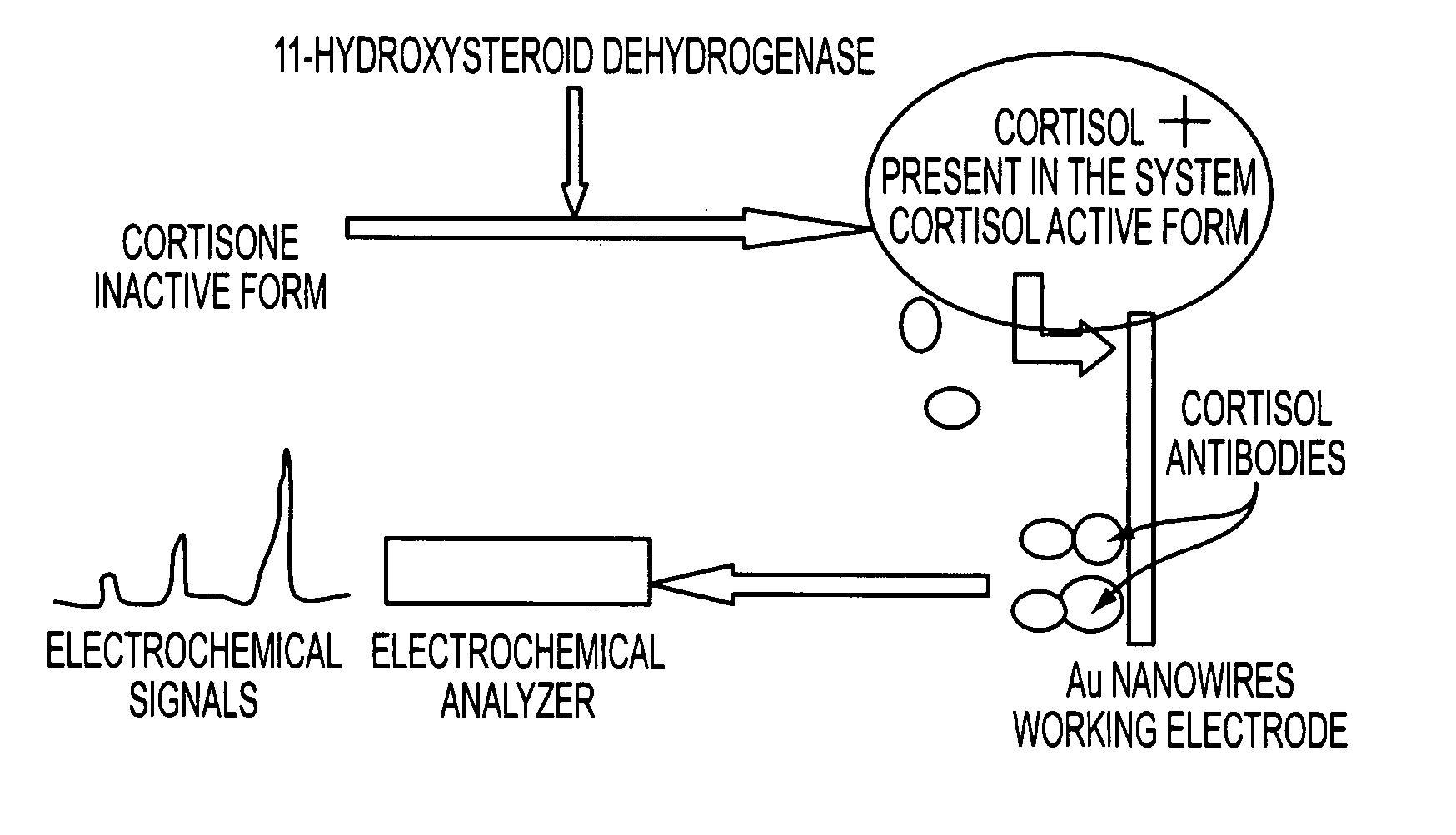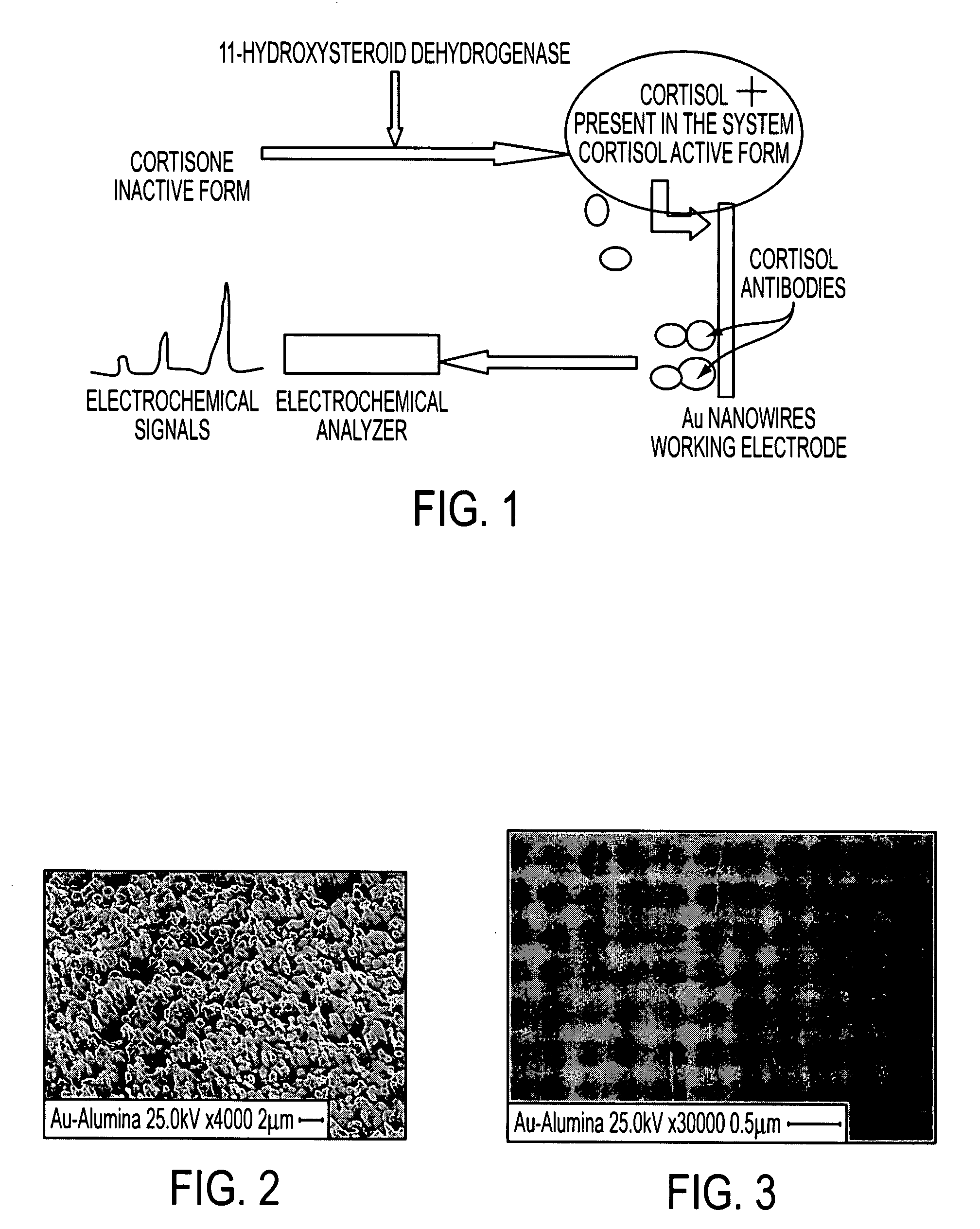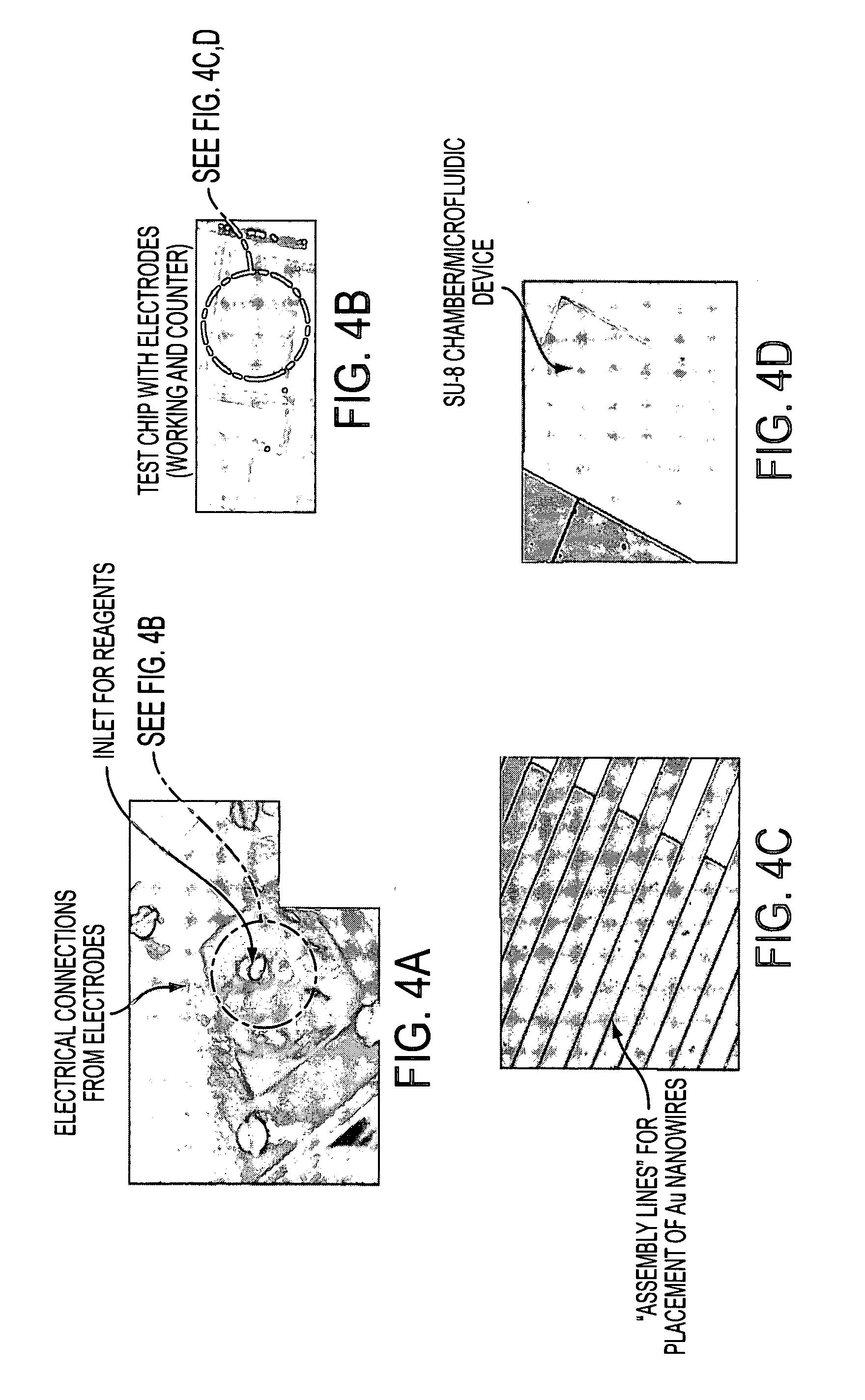Nano-Based Device for Detection of Disease Biomarkers and Other Target Molecules
- Summary
- Abstract
- Description
- Claims
- Application Information
AI Technical Summary
Benefits of technology
Problems solved by technology
Method used
Image
Examples
example 1
SEM Investigations of Functionalized Gold Nanowires
[0143] The 11β-hydroxysteroid dehydrogenase type 2 enzyme (11βHSD2) metabolizes glucocorticoids into their inactive 11-keto metabolites (Cortison). Although the type 1 enzyme (11βHSD1) displays both oxidative and reductive activity, to date 11βHSD2 has been shown to have dehydrogenase activity only. Although bidirectional, in vivo it is believed to function as a reductase generating active glucocorticoid at a prereceptor level, enhancing glucocorticoid receptor activation. However, the detection of inactive and active forms of cortisol is important to understand the role of cortisol in particular pathological and psychological disorders. In the proposed scheme, the present inventors measured cortisol present in the system in the form of cortisol as well as its conversion form from the cortison which is present in inactive form. These findings will be highly important to understand the profiles for a wide range of steroids often use...
example 2
AFM Analysis of the Functionalized Au (Gold) Nanowires
[0145] The coupling of the cortisol antibodies with the Au nanowires was further confirmed with atomic force microscopy (AFM). FIGS. 5 and 6 show the AFM image of the nanowires before and after immobilization of cortisol antibodies. The coupling can be seen clearly as increase in the roughness of the surface in the AFM image (FIG. 6). The figure shows smooth surface of the Au nanowires before coupling and after the coupling of cortisol antibodies the roughness of the Au nanowires surface has changed.
example 3
Electrochemical Response Studies of the Cortisol Detection
[0146] The biomolecules can be sensitively detected by using the square wave voltammogram technique. The scheme for this particular biosensor involved converting cortisone into cortisol using 3α-hydroxysteroid dehydrogenase, and capturing the cortisol over the electrode comprising Au nanowires with coupled cortisol antibodies, and electrochemically detecting the target (cortisol) using negative going potential. After scanning several times in different ranges, the detection range was found between 0.0-0.055 V, which is appropriate enough to avoid interfering signals. An increase in anodic peaks with respect to cortison as well 3α-Hydroxysteroid dehydrogenase concentrations using the same set of electrode configuration in the system confirms the conversion of cortison into cortisol. The concentration of the 3α-Hydroxysteroid dehydrogenase was measured spartanly with another set of functionalized Au nanowire electrodes. It was...
PUM
| Property | Measurement | Unit |
|---|---|---|
| Affinity | aaaaa | aaaaa |
Abstract
Description
Claims
Application Information
 Login to View More
Login to View More - R&D
- Intellectual Property
- Life Sciences
- Materials
- Tech Scout
- Unparalleled Data Quality
- Higher Quality Content
- 60% Fewer Hallucinations
Browse by: Latest US Patents, China's latest patents, Technical Efficacy Thesaurus, Application Domain, Technology Topic, Popular Technical Reports.
© 2025 PatSnap. All rights reserved.Legal|Privacy policy|Modern Slavery Act Transparency Statement|Sitemap|About US| Contact US: help@patsnap.com



